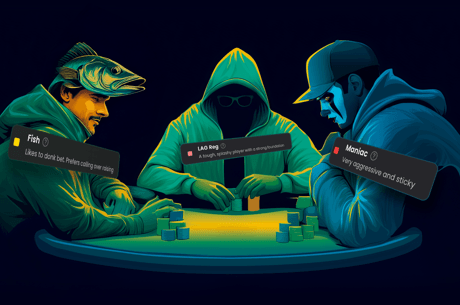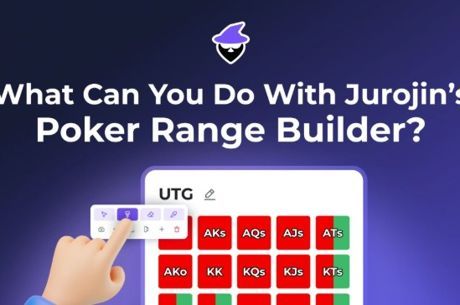Seven Ways to Keep the Game Moving and Increase Your Hourly Profit

How would you like to increase your cash game win rate by 10 percent?
I’ll tell you how — and it’s easy: Play faster. Assuming you’re a winning player, more hands per hour means more profit per hour.
In a typical low-stakes no-limit hold’em game in a casino, you can expect roughly 30 hands per hour. In a ten-handed game, that works out to 12 seconds per player per hand. If we could shave just one second per player per hand from that average, it would translate to about 33 hands per hour — that 10 percent increase I promised you.
Of course, you don’t have much control over how fast the other people play. But you do have control over yourself. So let’s consider seven ways you can trim unnecessary wasted time from your play, with absolutely no compromise on whatever time you legitimately need to make good decisions.
1. Cell phones
Hey, I like keeping up with Twitter, Googling random questions that pop into mind, and texting my girlfriend about the big bluff I just ran as much as anybody. But smart phones are one of the biggest drags on game speed these days.

You don’t have to swear off using the devices entirely, but you do need to make sure that your use is not slowing down the game. To that end, it is not enough that you put it away when it’s your turn to act. Even if you never failed to notice when it was your turn (an improbable bit of self-delusion), just waiting until that moment means that you’ll waste a couple of seconds blanking the screen or moving it off the table, then looking at your cards to make a decision.
I use the following rule of thumb, and recommend it to you, too. When the dealer starts the shuffle, that’s when the phone goes to blank, face down, or away, and it stays that way until your cards are in the muck. Put another way, any time you have live cards, or are about to receive them, your phone is out of the picture entirely.
I suspect that if everybody did just this one thing, we’d make that 10 percent raise.
2. The cocktail waitress
Long ago, I discovered a corollary of Murphy’s Law: Poker room cocktail waitresses never bring a player’s drink except right when it’s his turn to act.
Most players, when faced with these two competing demands on their attention, pick the cocktail waitress. I think this is plainly wrong. If you do that, you keep 10 or 11 other people (including the dealer) waiting for you. Conversely, if you make the game your priority, you keep only one person waiting for you — and she’s being paid for her time.
So politely tell the waitress, “Just a second, please,” take your turn, then give her your attention to place an order, receive your drink, and give her a tip (which, of course, you have prepared in advance, right?).
3. Cup holders
While we’re on the subject of drinks, use cup holders and side tables. A capped bottle of water on the table isn’t much of a problem, but open drinks on the felt are a big no-no.

A single spill can bring the whole game to a screeching stop for a good ten minutes while the poker room staff mops up the mess, brings in new decks of cards, and so on. I’ve even seen messes so ugly that they had to move the entire game to a new table.
There is simply no excuse for ever being the cause of this. Spilled drinks, like car accidents caused by drunk drivers, are a 100 percent foreseeable, 100 percent preventable problem.
4. Chip stacks
Keep your chips in reasonably tidy, regular stacks of 20 and/or 10. 20 is the standard, but I’m sympathetic with my fellow klutzes who are forever knocking over stacks that tall, so I think 10s are a good alternative if you can do it without taking up too much real estate.
Doing this helps speed up the game in several ways:
- You can count your own chips more quickly, so any decision that relies on a consideration of stack-to-pot ratios becomes easier.
- Other players can estimate your stack size more readily, so they can make their all-in decisions faster.
- If the dealer needs to make a formal count, there’s no wasted time sorting and stacking the chips before adding them up.
- In a tournament, the color-up process will take less time.
5. Don’t toss
There is never, ever any need to toss chips when making or calling a bet.
Look, folks, this isn’t rocket science. Chips are round. They bounce and roll. And every time they do, time is wasted gathering them back up and putting them into the stacks that they should have been in in the first place.
Count out the amount of your bet, call, or raise. Put the chips in a stack (or two, if needed). Slide them forward. Done. Then do that again. Every. Single. Time.
6. The button
As a general rule, don’t move the button — let the dealer do it.
This may be counterintuitive, because you might think that it saves a bit of time between hands if the dealer has that one less thing to do. But it doesn’t.

If the dealer doesn’t know that the button has been moved, and moves it again, then we have a mess. The game stops while everybody argues over where the button was last hand and where it should be now. The time lost in just one such controversy vastly outweighs the one second or so that it takes the dealer to move it a whole bunch of times.
There are exceptions. Some tables are so big that it’s a real struggle for dealers to reach the button when it’s on the ends, especially for those of smaller stature. In those instances, it’s okay to help.
But even then, you have to do it right. That means moving the button at the same moment the dealer would, which is immediately after pushing the pot to the winning player. That’s when the dealer’s attention will turn to the button, so that’s when you can move it under his or her watchful eye. If somebody else has already moved the button prematurely, that’s also the right moment to make that fact clear to the dealer: “Button has moved.”
7. The button, continued
The button is not your toy. Don’t spin it. Don’t flick it from one hand to the other. Don’t place your bets on top of it. Don’t pull it in next to your chip stacks. Don’t use it as your card protector. Don’t try to balance it on edge.
Both players and the dealer need to use the button as a visual reference point several times in the course of every hand. It needs to be sitting out there as conspicuously as possible. Time spent scanning the table trying to find a button that some numbskull has moved out of plain sight is time wasted.
Conclusion
Well, I had a bunch more time-saving suggestions, but I’m out of space. The main point is this: Most of the things I’ve mentioned typically kill only one or two seconds each time they happen, but those seconds really add up.
Remember, just one second per player per hand, saved by a bunch of tiny bits of extra efficiency, means a roughly 10 percent increase in your hourly profit. Do your part toward this goal, and maybe others will catch on and do theirs.
Robert Woolley lives in Asheville, NC. He spent several years in Las Vegas and chronicled his life in poker on the "Poker Grump" blog.
Photo (WSOP wine spill): Andrew Teng.
Be sure to complete your PokerNews experience by checking out an overview of our mobile and tablet apps here. Stay on top of the poker world from your phone with our mobile iOS and Android app, or fire up our iPad app on your tablet. You can also update your own chip counts from poker tournaments around the world with MyStack on both Android and iOS.







